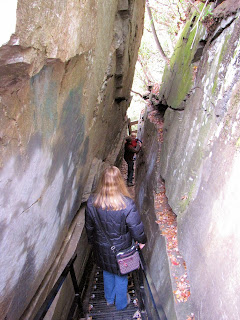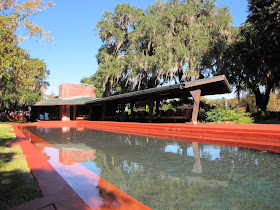One of
the cornerstones of the Latvian society in Chicago is the Krišjāņa Barona latviešu skola (KBLS), the Latvian School of
Chicago. The elementary and high school was founded in 1950 by Latvian
immigrants who fled to the United States from Latvia after WWII, and moved to
the present location at the Chicago Latvian Zion Church on Montrose Avenue in
1976. The stated objective of the school is to “involve children and youth in
Latvian community life, and to provide interested families and their children a
program of instruction in the Latvian language, culture, history and current
events.” The school uses the American Latvian Association curriculum as a basis
for its program, and there are a growing number of children who homeschool
through KBLS in cities that don’t have Latvian school programs.
 |
| Lauris sporting a Nīcas costume |
It was
like a French reunion as our friends from Chatenet, France were also in town
visiting. All three boys spent the morning working on their counting and
sorting skills, practicing their letters and phonetics, and learning about the
traditional Latvian folk costumes. Lauris immediately recognized his old
friends from the Biz Biz program he attended this summer in Gaŗezers, and even
though Mikus preferred the train table to the school table I believe he did get
something of value out of the morning’s lessons.
After
lunch in the cafeteria we stayed on to bake some piparkūkas (the Latvian Christmas cookie), lending a hand with the community
cookie bake. The results will be sold at the annual Christmas market, with
proceeds benefitting the school. The next bake will be on December 7th,
so I urge all you Chicagoans reading this to pencil it in your calendars and go
pitch in; it was a fun time socializing over a cup of coffee and the cookie
cutters, and everyone is welcome to join in.
 |
| Lobster claws!!! |
Then
snow pants, gloves and hats went on, and the three friends ventured out to the
playground. The boys had prime spots to watch planes passing overhead on their
approach to O’Hare airport, but soon even this couldn’t distract them from the cold
wind on exposed noses and cheeks…
After
helping decorate the scout and guide Christmas tree we watched folk dancing
rehearsals, laughing at our polka memories
as both of us moms had danced similar steps in the very same room many years
ago. Another cup of coffee, more antics on behalf of the boys and soon it was
time to head to grandmother’s house for time with family and a delicious
dinner. A big thank you to the Latvian School of Chicago for so graciously
accepting us into their fold Saturday, and maybe one day we’ll be joining the
ranks of Latvian school students homeschooling with the KBLS materials.














































